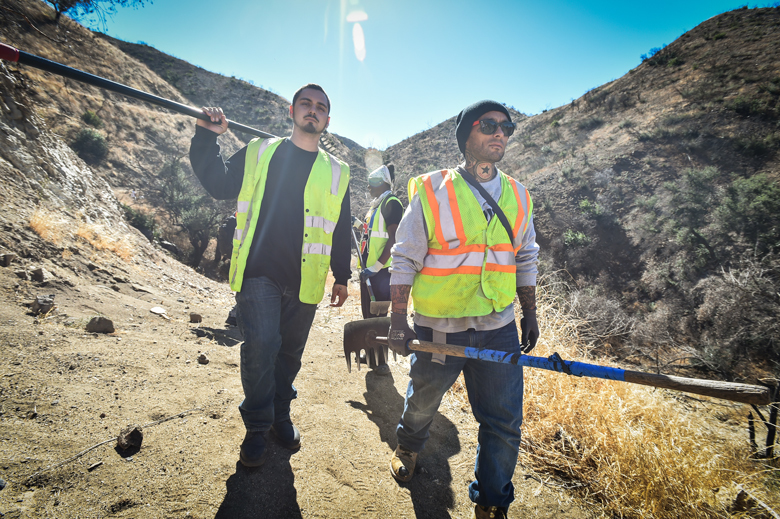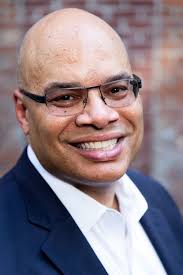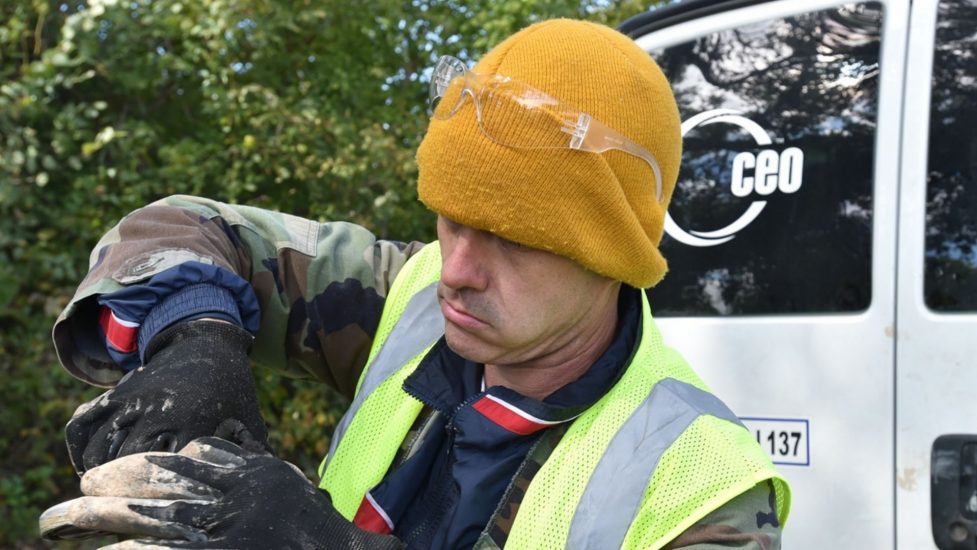One in three adults in the United States has a criminal record. That’s 70 million people, according to American Progress. Even after they’ve fulfilled their time, the formerly incarcerated are five to seven times more likely to be unemployed, a statistic further exacerbated by COVID-19. Organizations such as the Center for Employment Opportunities (CEO) are working to change that statistic.

CEO provides transitional employment and job skills development services through a model that’s led to 34,000 job placements with more than 4,000 employers across the country.
“It’s very difficult when you come out of prison to land a job, and one of the main concerns that our job seekers are worried about is that people won’t really understand their particular situation, their conviction. It’s a highly stigmatized population,” says Christopher Watler, chief external affairs officer for CEO.
“They come to CEO because they know that we know their situation, that we’re sensitive to it, and they know that our employers are employers that have hired from CEO in the past,” says Watler.
Usually referred to CEO from parole or probation agencies, participants who complete a one-week job-readiness orientation class are immediately placed on a transitional work crew with a guarantee of four days of work a week.

CEO assumes all responsibility for directly paying and managing the crews, ensuring participating companies and organizations that they have enough manpower to get the job done each day. CEO handles all insurance, bonding, payroll, and benefits. Workers are paid daily through a debit card to help teach them how to manage their money and banking skills.
The transitional work crews take part in an expansive range of outdoor and indoor services, such as event set-up and breakdown, light demolition, and highway maintenance. “We tend to place people in jobs that pay a little above minimum wage, usually with limited benefits. I like to say first jobs out of prison. These are not forever jobs,” Watler explains.
CEO focuses on a multitude of industries and sectors from media to transportation to construction, including companies such as Vice Media, Bojangles, The Osborne Association, CalTrans, Oakland Public Works Department, and City of San Diego.
Access to Skills Development Through Coaching
Throughout their time on a transitional crew, participants also work with a job coach who helps them create a resume and practice interviewing skills. Participants are also referred to additional support services such as digital skills training through Google’s Career Readiness For Reentry program, which CEO is a partner on.

“By giving them access to training and skills development, the hope is that they can kind of progress along a kind of ‘career lattice’ that you might move across to different jobs until you get a better job. The idea is to help them to be successful,” Watler tells WorkingNation.
Through each step, skills assessments monitor the participant’s progress.
“They are rated every day when they work on CEO’s transitional job sites by a CEO site supervisor. That information populates our Salesforce system and each week the job coach reviews how they are doing. That assessment looks at a participant’s ability to take direction, complete tasks as assigned, work with others, and arrive to work on time,” he adds,
Participants may also receive free credential training on some of the sites once they fulfil certain prerequisites. For example, participants must be at a certain reading and math levels to participate in CEO’s carpentry training. Other training opportunities include Occupational Safety and Health Administration (OSHA), pest control, food handler, and forklift operation.
After their coach feels they are ready—what CEO calls Job-Start Ready—the participant is sent on employment interviews based on employer needs and the participants’ skills identified during assessments with job coaches. And once they land a job, retention services like counseling, crisis management, and career planning help them stay employed.
CEO Gives Participants Job-Ready Tools and Confidence
The consistent touchpoints were key for Betty McKay’s success transitioning from a 27-year sentence to her freedom in 2017. She says her parole officer recommended CEO. McKay’s first job was picking up trash on roadsides for CalTrans—California’s public transportation department—earning minimum wage. Two and a half months later, she worked for another company as a food packer, climbing to lead packer within a few months.
“It wasn’t somewhere I thought, ‘Ooooo, I finally found the job for me for life.’ It wasn’t, and I knew that it wasn’t,” McKay says. “But I always believed in what I facilitated (in prison) which was when you get out and you get a job, you get a better job. You get a career. First, it was the job. Then, it was the better job.”
In less than a year, she became a case manager for an organization that advocates for women recovering from incarceration and homelessness. McKay says while that role still wasn’t her “job for life,” it lit a spark inside her.

“The thing is not that CEO connected me with a job, but they gave me the confidence to go for it,” she says. “I was able to become part of something I believed in through CEO. I was able to identify where I truly wanted to be. My heart and soul longed to use my voice.”
Through the regular assessments that are a critical component of the CEO program McKay says she improved her soft skills and other aspects of pursuing a career—not just a job.
She explains she built on the feedback and the post-incarceration jobs to become a sought-after speaker, chair of CEO’s Participant Advisory Council and an even bigger fan of the organization. She’s joined its orientation program for new participants, sharing her experience and how to make the most out of CEO’s resources.
McKay’s work has come full circle. She currently serves as an organizer for the Essie Justice Group, an organization that advocates for women affected by incarceration.
“The thing that I think is great is CEO held me. My own family did not understand what I was going through and had their own preconceived notion of what me entering back into society looked like,” she says.
“Not only did CEO say I could do it, they made space for me to do it in the program. They really built me to succeed. And I think that’s more important than any job they could’ve given me. They built me to succeed.”











